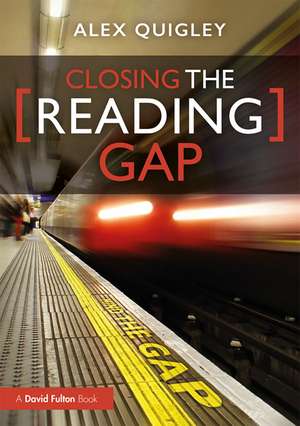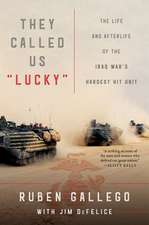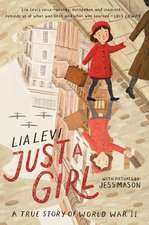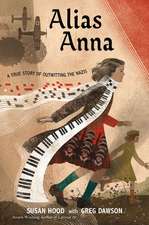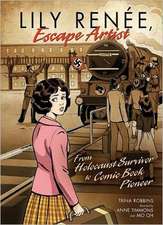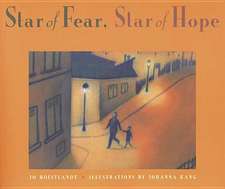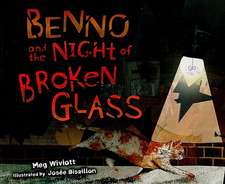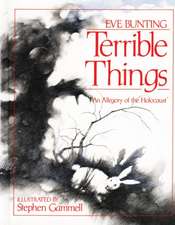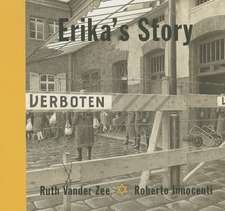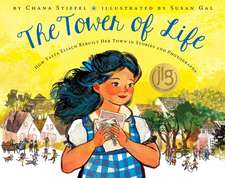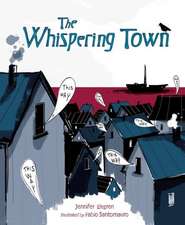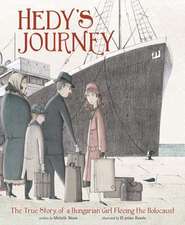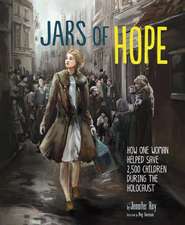Closing the Reading Gap
Autor Alex Quigleyen Limba Engleză Paperback – 2 apr 2020
| Toate formatele și edițiile | Preț | Express |
|---|---|---|
| Paperback (1) | 132.12 lei 3-5 săpt. | +14.84 lei 4-10 zile |
| Taylor & Francis – 2 apr 2020 | 132.12 lei 3-5 săpt. | +14.84 lei 4-10 zile |
| Hardback (1) | 765.84 lei 6-8 săpt. | |
| Taylor & Francis – 31 mar 2020 | 765.84 lei 6-8 săpt. |
Preț: 132.12 lei
Nou
25.28€ • 26.40$ • 20.88£
Carte disponibilă
Livrare economică 25 martie-08 aprilie
Livrare express 08-14 martie pentru 24.83 lei
Specificații
ISBN-10: 0367276887
Pagini: 248
Ilustrații: 7 Tables, black and white; 9 Line drawings, black and white; 2 Halftones, black and white; 11 Illustrations, black and white
Dimensiuni: 148 x 210 x 13 mm
Greutate: 0.39 kg
Ediția:1
Editura: Taylor & Francis
Colecția Routledge
Locul publicării:Oxford, United Kingdom
Public țintă
General, Postgraduate, Professional, Professional Practice & Development, and UndergraduateCuprins
Chapter 1: Introduction. Chapter 2: A History of Reading. Chapter 3: A Scientific Eye of Reading. Chapter 4: Reading Comprehension. Chapter 5: Reading Barriers. Chapter 6: Reading in the Subject Disciplines. Chapter 7: Practical Strategies for Closing the Reading Gap. Chapter 8: Next Steps. Appendix. Bibliography.
Notă biografică
Alex Quigley is a former English teacher and school leader, of over 15 years' standing, who now works for the Education Endowment Foundation, supporting teachers to access research evidence. He can be found on Twitter @HuntingEnglish and blogs at www.theconfidentteacher.com. His previous books include Closing the Vocabulary Gap and The Confident Teacher.
Recenzii
Teresa Cremin, Professor of Education, Open University, UK
The science of reading was never a part of my teacher training and I'd have loved a book like this. Alex Quigley's Closing the Reading Gap is everything I hoped it would be; a wonderfully enlightening follow-up to his brilliant vocabulary book. For those seeking to understand how reading works, alongside some of the associated debates, Alex gives us the in-depth research-informed analysis we’re after. He also delivers the accessibility and range of practical strategies busy teachers need to support children to read more fluently and to learn more through reading. Chapters 3 and 4 capture the key concepts we need to understand the complex processes of decoding and comprehension; it’s packed with wisdom and insights. Chapter 7, outlining an array of practical strategies for schools and teachers, is a magnificent reference for everyone working in education. I can see this book having a very significant impact.
Tom Sherrington, author and education consultant
When over a quarter of 11-year-old pupils do not reach the expected standard in reading, Closing the Reading Gap is a welcome and much needed addition to our understanding of the process and difficulty of reading. This wide compassing book takes us through the history of reading and identifies some of the barriers for many of our pupils and offers many suggestions which professionals can support them in this vital aspect of provision.
It is laden with important insights such as ‘we are better off with concentrating on the relatively slow, deliberate process of reading for meaning and to understand the subtle difference between reading speedily and reading with fluency.’ And when we ask ourselves the questions posed by Alex, we are likely to get better at this important aspect of our practice: what are the ‘Goldilocks books’ for year 2... year 5 and year 9; how will we mediate their complexity, whilst keeping an eye on the detail of our pupils’ reading development; how often do we assume a text that has been read has been understood?
And what resonated powerfully for me is the idea that it is important that pupils read extended texts if they are to grow more sensitive to text structures. If they are predominantly reading power point slides with condensed phrases, sentences and images, they will not gain experience in tracking more extended text structures. Paradoxically, by making the curriculum more accessible in the short-term, we can make it harder to access curriculum reading in the long- term.
An important read for all teachers, across all phases and subjects
Mary Myatt, education adviser and writer, author of The Curriculum: Gallimaufry to Coherence
This book should be a core text for all teachers, whether trainees or experienced professionals, whatever their subject or key stage specialism. Reading success is essential for young people to access any academic curriculum and this book draws together research and effective practice across all subjects and age groups. But not only does it identify and evaluate the symptoms of reading challenges, it provides practical advice and support to 'close the reading gap.' Exam success is underpinned by effective reading tuition, and this book will help every teacher gain a greater understanding of how to teach reading constructively so that academic achievement is attainable for every pupil.
Alison Wilcox, author of the Descriptosaurus series
In this engaging book, Alex Quigley explores the knowledge and skills expert reading teachers need to teach reading and to nurture pupils’ desire to read. If you are developing the school reading curriculum, this accessible and timely text, which is packed with practical strategies, will be a valuable asset. In opening up the complexities of reading in an appealing and conversational manner, and paying particular attention to metacognition, Alex offers the profession evidence-informed tools to re-consider reading and six steps to close the reading gap. A book worth buying.
Teresa Cremin, Professor of Education, Open University, UK
The science of reading was never a part of my teacher training and I'd have loved a book like this. Alex Quigley's Closing the Reading Gap is everything I hoped it would be; a wonderfully enlightening follow-up to his brilliant vocabulary book. For those seeking to understand how reading works, alongside some of the associated debates, Alex gives us the in-depth research-informed analysis we’re after. He also delivers the accessibility and range of practical strategies busy teachers need to support children to read more fluently and to learn more through reading. Chapters 3 and 4 capture the key concepts we need to understand the complex processes of decoding and comprehension; it’s packed with wisdom and insights. Chapter 7, outlining an array of practical strategies for schools and teachers, is a magnificent reference for everyone working in education. I can see this book having a very significant impact.
Tom Sherrington, author and education consultant
When over a quarter of 11-year-old pupils do not reach the expected standard in reading, Closing the Reading Gap is a welcome and much needed addition to our understanding of the process and difficulty of reading. This wide compassing book takes us through the history of reading and identifies some of the barriers for many of our pupils and offers many suggestions which professionals can support them in this vital aspect of provision.
It is laden with important insights such as ‘we are better off with concentrating on the relatively slow, deliberate process of reading for meaning and to understand the subtle difference between reading speedily and reading with fluency.’ And when we ask ourselves the questions posed by Alex, we are likely to get better at this important aspect of our practice: what are the ‘Goldilocks books’ for year 2... year 5 and year 9; how will we mediate their complexity, whilst keeping an eye on the detail of our pupils’ reading development; how often do we assume a text that has been read has been understood?
And what resonated powerfully for me is the idea that it is important that pupils read extended texts if they are to grow more sensitive to text structures. If they are predominantly reading power point slides with condensed phrases, sentences and images, they will not gain experience in tracking more extended text structures. Paradoxically, by making the curriculum more accessible in the short-term, we can make it harder to access curriculum reading in the long- term.
An important read for all teachers, across all phases and subjects
Mary Myatt, education adviser and writer, author of The Curriculum: Gallimaufry to Coherence
This book should be a core text for all teachers, whether trainees or experienced professionals, whatever their subject or key stage specialism. Reading success is essential for young people to access any academic curriculum and this book draws together research and effective practice across all subjects and age groups. But not only does it identify and evaluate the symptoms of reading challenges, it provides practical advice and support to 'close the reading gap.' Exam success is underpinned by effective reading tuition, and this book will help every teacher gain a greater understanding of how to teach reading constructively so that academic achievement is attainable for every pupil.
Alison Wilcox, author of the Descriptosaurus series
I enthusiastically recommend Closing the Reading Gap with five shiny Schools Week stars. I know it’ll genuinely change significant aspects of my classroom practice for the better when school finally resumes, as it is already influencing my online teaching.
Douglas Wise, Schools Week
This is a very readable book, supported by easy-to-read print in well-spaced sentences – good considerations for all readers and individuals developing their reading skills.
I find the range of information in this book of just 201 pages, including extensive references at the end of each of its eight chapters, encouraging. Each chapter captures many important points for everyone involved in teaching and developing students’ reading, to acknowledge, learn, and put into daily practice.
Dr Jenny Moody, Dyslexia Review
Overall, this is a really useful introductory text. For those who are new to teaching or literacy support this book contains most of the knowledge it might take several years of practice to obtain. It is a rich resource both in terms of its exhaustive list of strategies and its broad introduction to the key ideas you will need to familiarize yourself with. These are written in a clear and engaging fashion, and it is apparent throughout that Quigley cares deeply for his students and their school experience.
K Ingham Roy, Child Language and Teaching Therapy
Descriere
Our students' success will be defined by their ability to read fluently and skilfully. But despite universal acceptance of reading's vital importance, the reading gap in our classroom remains, and it is linked to an array of factors, such as parental wealth, education, book ownership, as well as classroom practice. To close this gap, we need to ensure that every teacher has the knowledge and skill to teach reading with confidence.
In Closing the Reading Gap, Alex Quigley explores the intriguing history and science of reading, synthesising the debates and presenting a wealth of usable evidence into how children develop most efficiently as successful readers. Offering practical strategies for teachers at every phase of their teaching career, and tackling issues such as dyslexia and the role of technology, the book helps teachers to be an expert in how pupils 'learn to read' as well as how they 'read to learn', and explores how reading is vital for unlocking a challenging academic curriculum for every student.
With a focus on nurturing pupils' will and skill to read for pleasure, this essential volume provides practical solutions to help all teachers create a rich, reading culture that will enable every student to thrive in school and far beyond the school gates.
